Desert in bloom at Red Hills Desert Garden, part 1
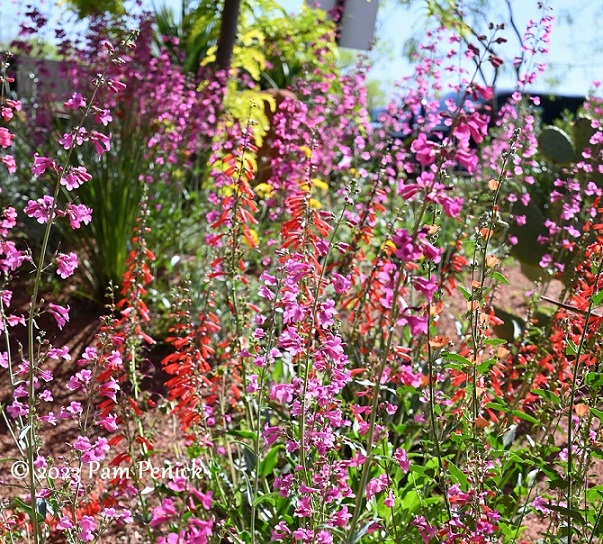
Utah. Red rock desert. Cactus and yuccas. When we set out in April in a rented RV to visit national parks out west, I expected hundred-mile vistas, arches, and canyons. What I didn’t expect was a flowery, beautifully designed garden of desert-appropriate plants. But thanks to a tip from Quercus/David C. on Instagram, I added Red Hills Desert Garden to our itinerary, curious to visit this young, up-and-coming public garden.
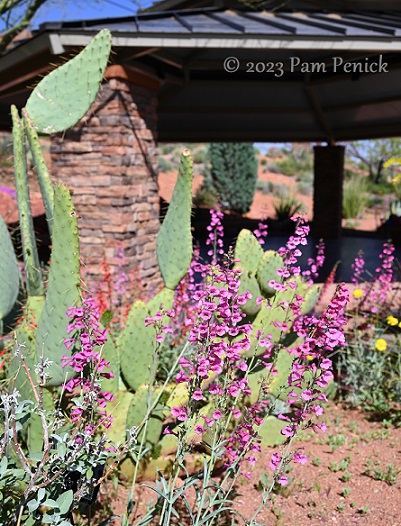
One morning we drove from our campground near Zion to Red Hills Desert Garden in picturesque St. George, Utah. Settled by Mormon cotton farmers, St. George today is a charming boomtown whose water supply is strained by a megadrought and rampant population growth. Red Hills aims to show residents and visitors how beautiful desert-wise landscaping can be, spurring outdoor water conservation.
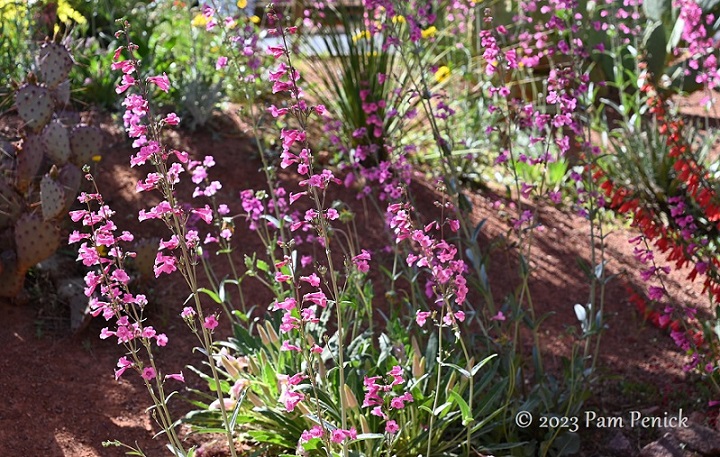
The first desert conservation garden in Utah, Red Hills Desert Garden opened in 2015 as a collaboration between the Washington County Water Conservancy District, City of St. George, and Virgin River Program. According to its website, “[t]he nearly 5-acre garden features 5,000 water-efficient plants, a 1,150-foot stream stocked with native and endangered fish species, a replica slot canyon[,] and prehistoric dinosaur tracks found onsite dating back 200 million years.”
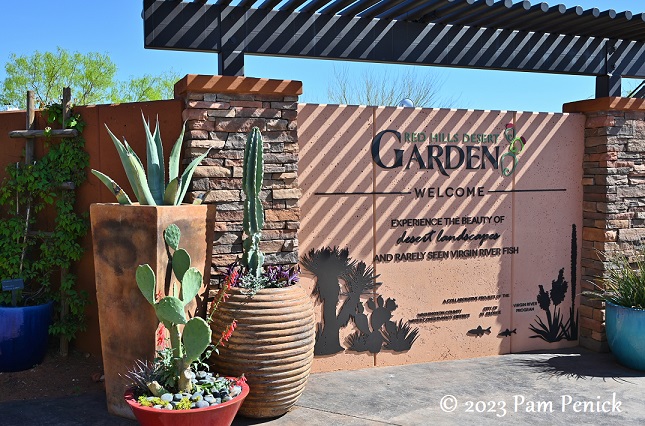
Admission is free, and the garden stays open every day from 6 am to 10 pm, early and late enough that you could take golden-hour photos even in summer — a rare treat at most public gardens. It’s located next to the hike and bike trails of Red Cliffs Desert Reserve and 52-acre Pioneer Park on a ridge overlooking the town.
OK, let’s tour!
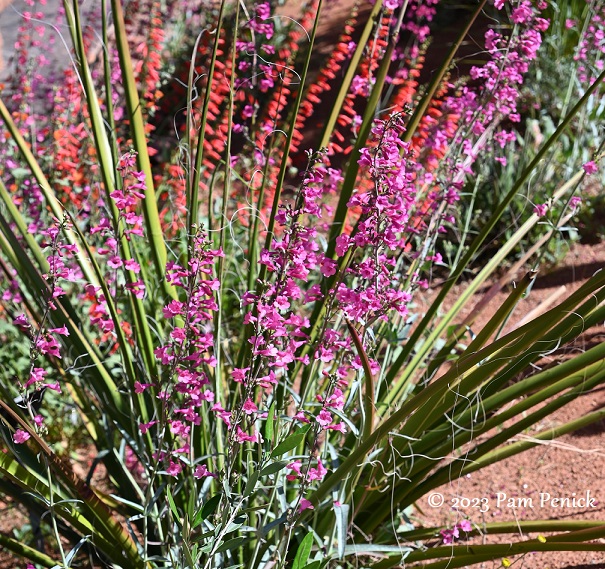
In late April, spring was popping in the garden. Pink and red penstemons glowed in the clear, bright desert light…
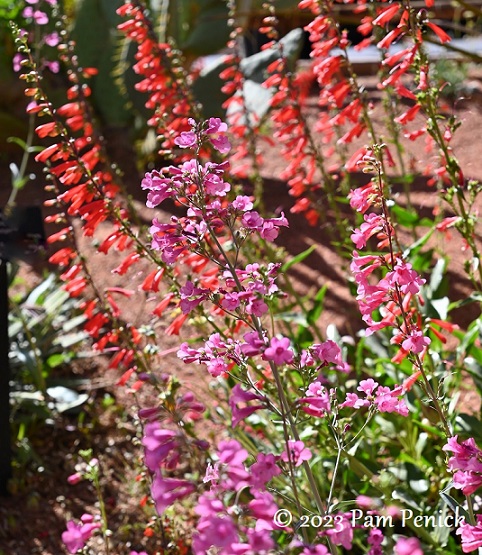
…each flower spike displaying dozens of tubular flowers.
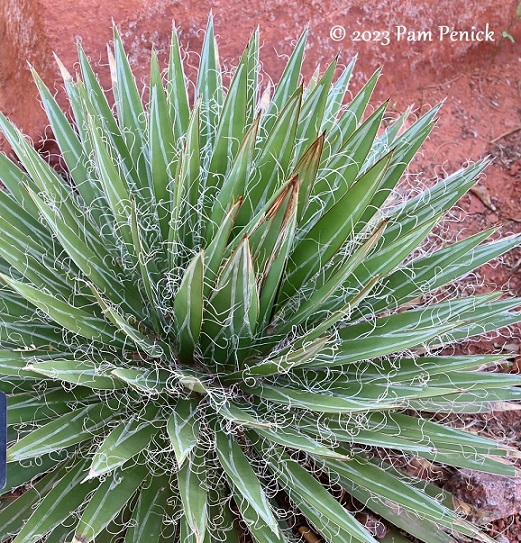
Agave ‘Durango Delight’, with its crisp white lines and hair-like filaments, makes a handsome specimen against red rock.
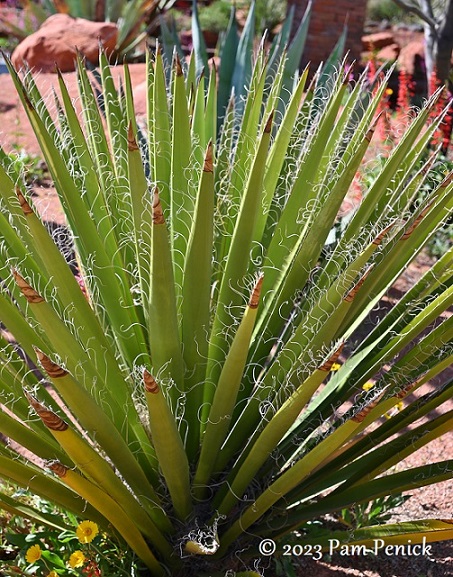
Curly filaments adorn Faxon yucca (Yucca faxoniana) too.
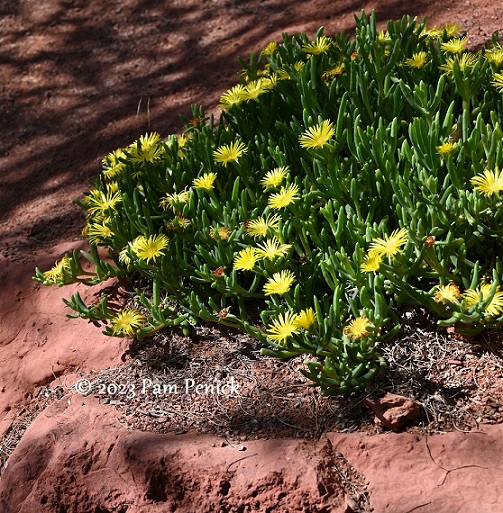
‘Rocky Point’ ice plant with sunny yellow flowers
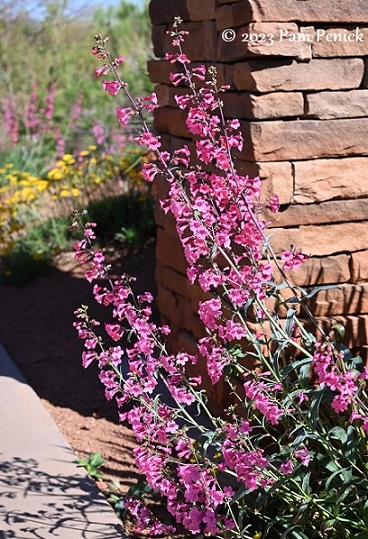
But back to those gorgeous penstemons…
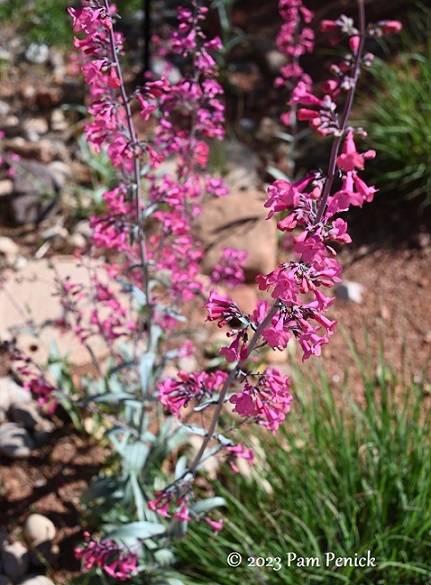
I believe this was labeled superb penstemon (Penstemon superbus), an appropriate name for a beautiful plant.
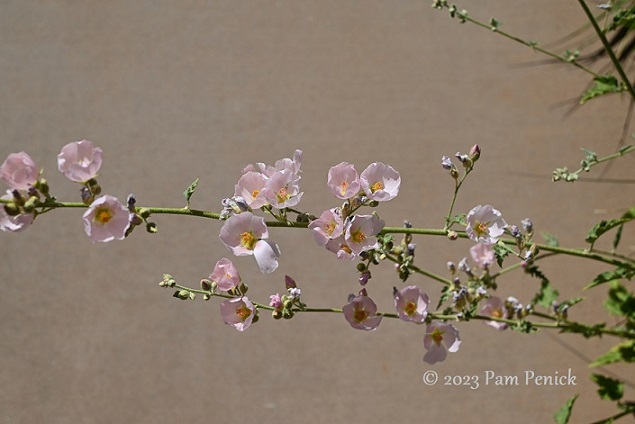
Globemallow (Sphaeralcea ambigua) is another desert beauty. This one is ballerina pink.
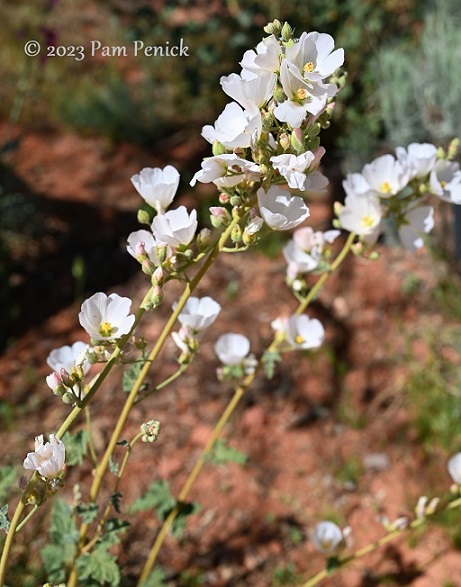
I spotted white globemallow too and, later, a peach one.
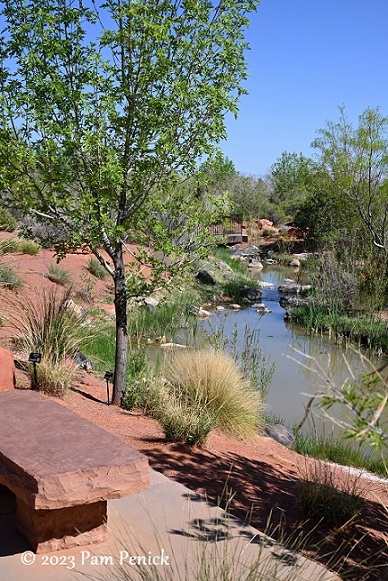
A manmade stream ambles through the garden, with riparian plants along the banks. In an arid garden, such a water feature has a big impact.
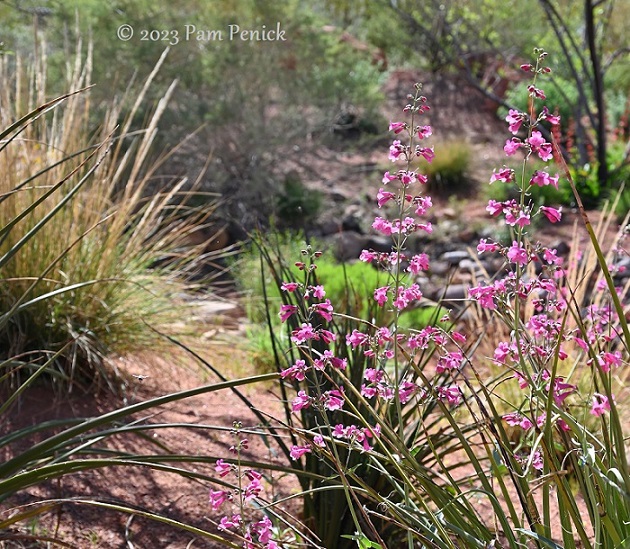
More superb penstemon
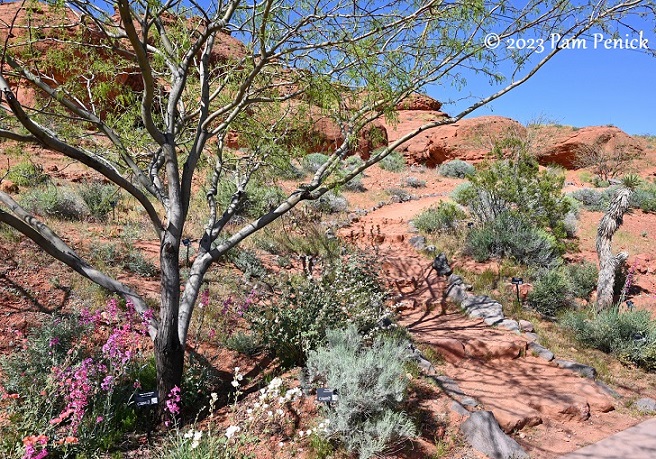
One trail climbs out of the main garden to run along the boulders of adjacent Red Cliffs Desert Reserve.
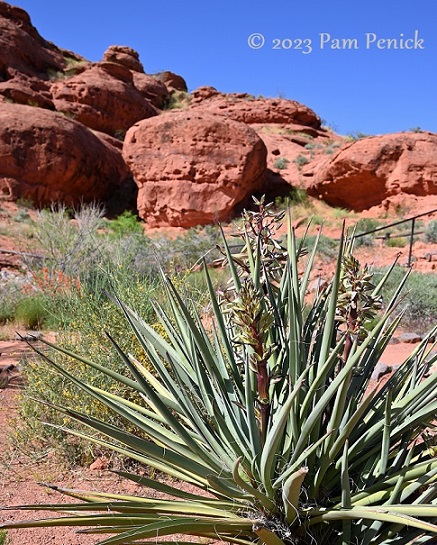
Against the distinctive Utah (Martian-esque) landscape poses a flowering banana yucca (Yucca baccata).
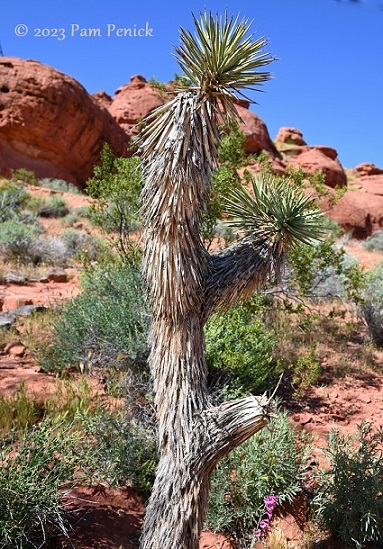
A multi-trunked Joshua tree (Yucca brevifolia) fits in here too.
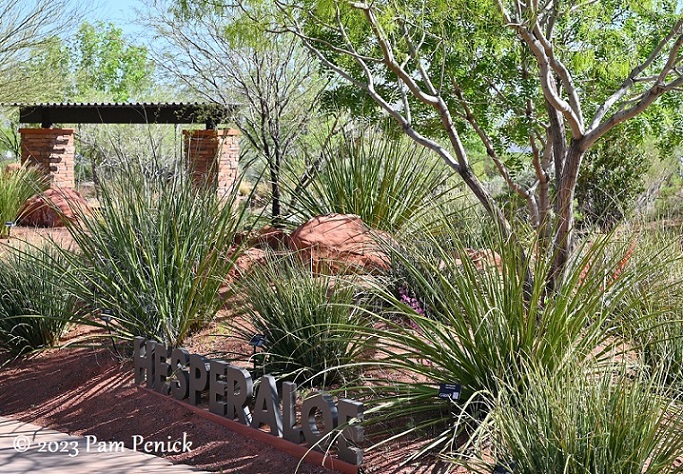
Sections of the garden feature a particular genus, like hesperaloe. Massed hesperaloes have a surprisingly grassy look, don’t they?
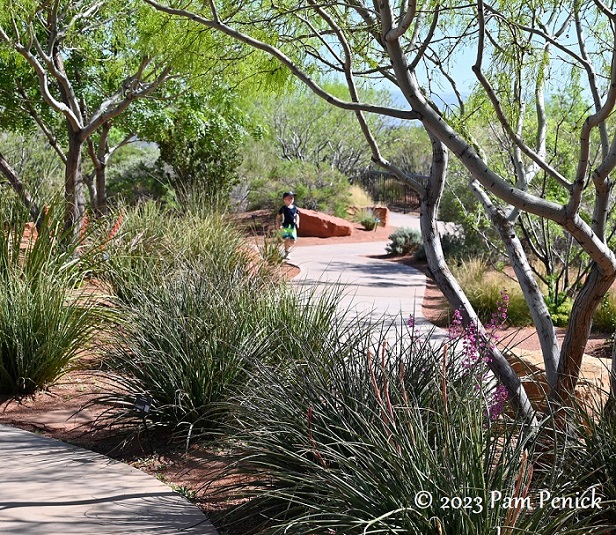
A few of them were starting to bloom.
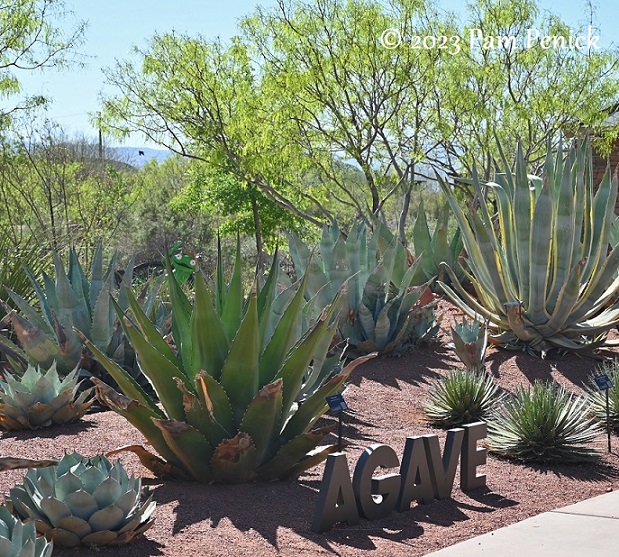
Big, bold agaves were showing off toothy, sword-shaped leaves in the agave garden.
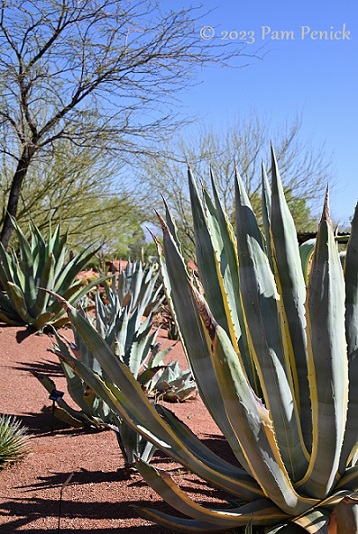
Such drama queens
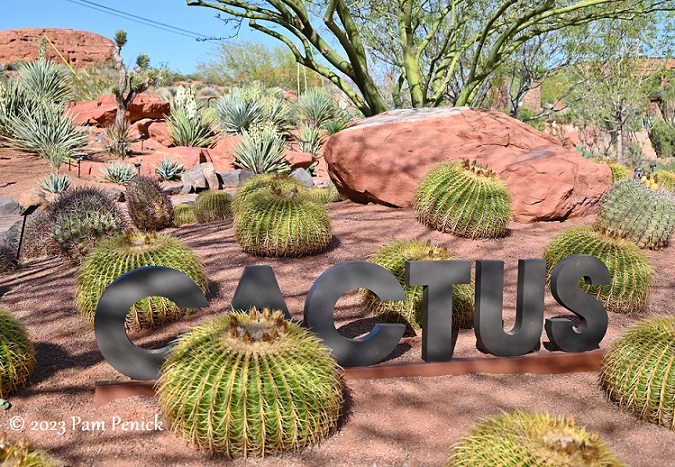
Bouncy golden barrels announce the cactus garden.
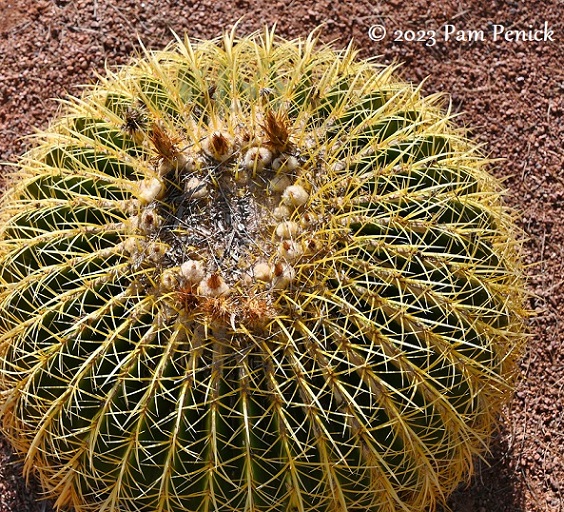
Like spiny beach balls
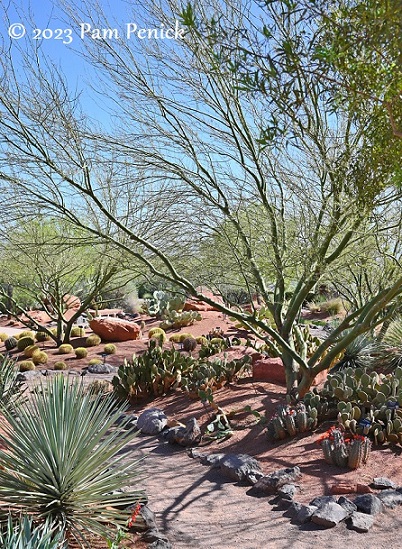
In late April, some trees were just starting to leaf out after a cold, snowy winter.
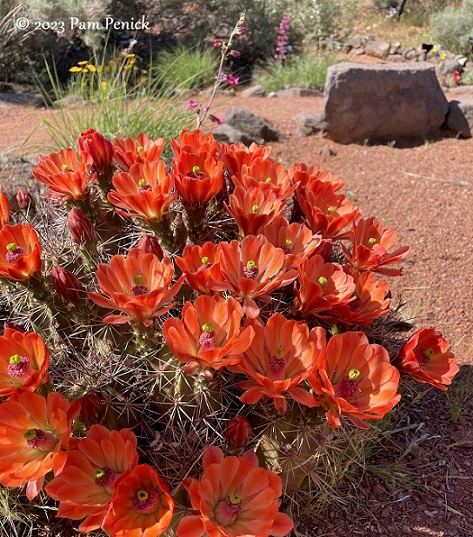
Claret cup cactus (Echinocereus triglochidiatus) flowering gorgeously
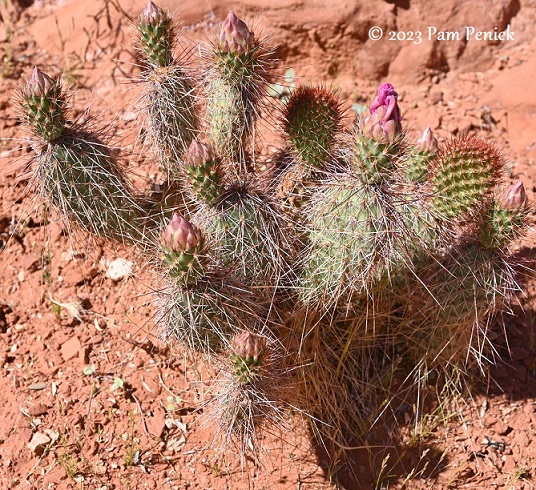
Shaggy-spined Mojave prickly pear (Opuntia erinacea) about to bloom
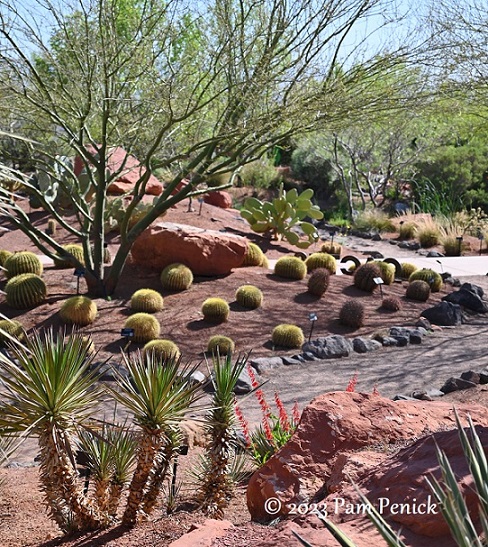
I think that’s a palo verde tree, and I can just imagine how beautiful its golden flowers will look with the golden barrels.
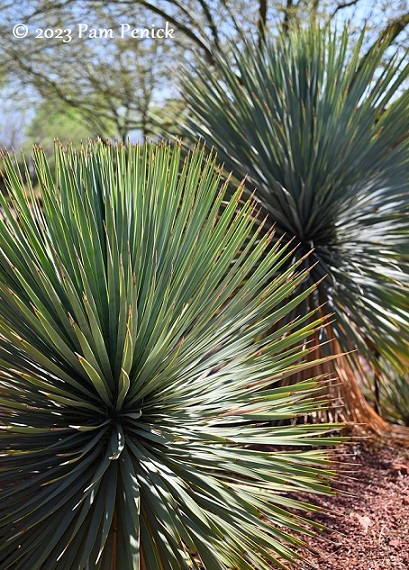
In the yucca garden, beaked yucca (Yucca rostrata) holds up shimmering, strappy leaves in its distinctive Koosh ball way.
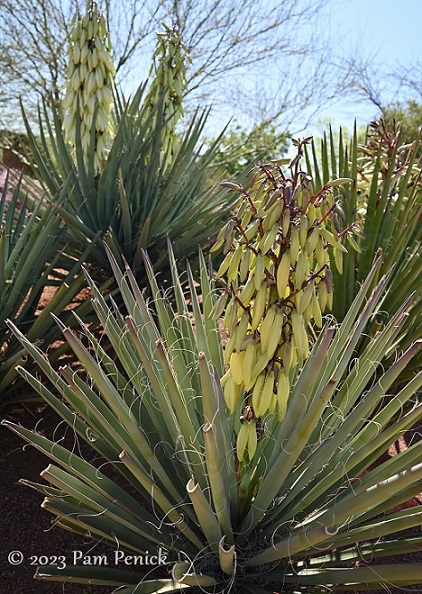
Banana yucca (Yucca baccata) puts on a show with fruit that really does resemble miniature bananas.
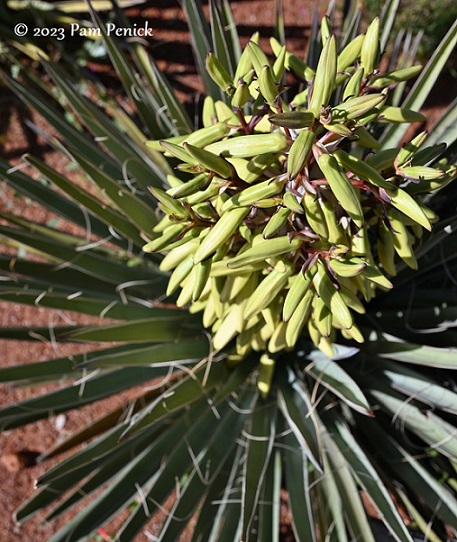
Banana yucca from above
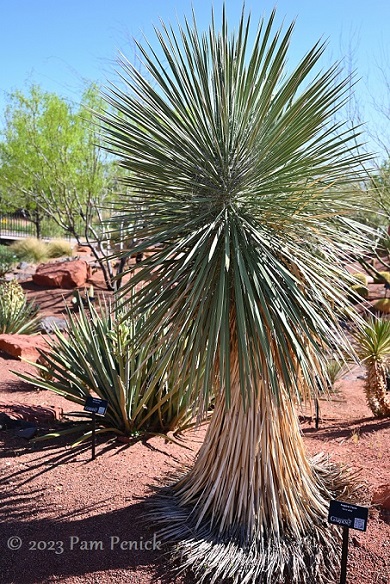
Soaptree yucca (Yucca elata) wears a hula skirt of dried leaves.
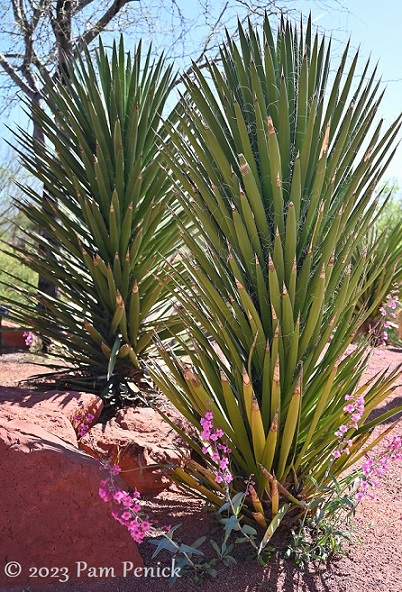
Faxon yucca (Yucca faxoniana) and penstemon make a pretty duo.
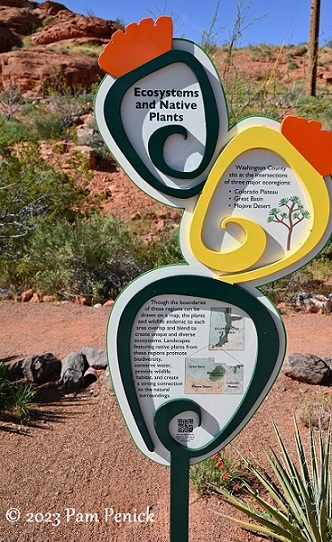
Garden signage educates visitors about native ecosystems in the desert…
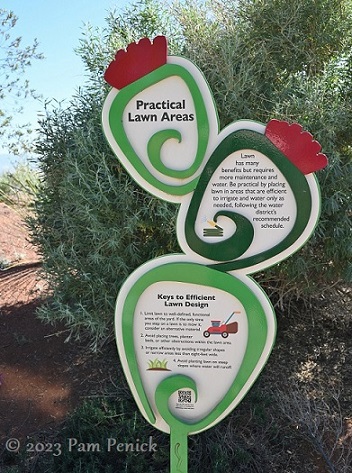
…and promotes reducing thirsty lawn through thoughtful design.
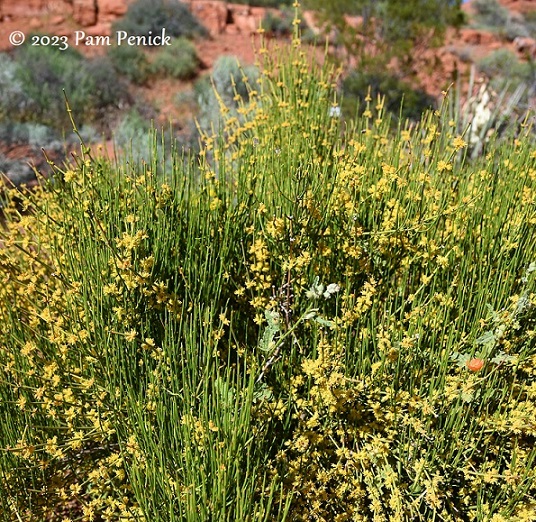
Mormon tea (Ephedra viridis) covers its slender stems in butter-yellow flowers.
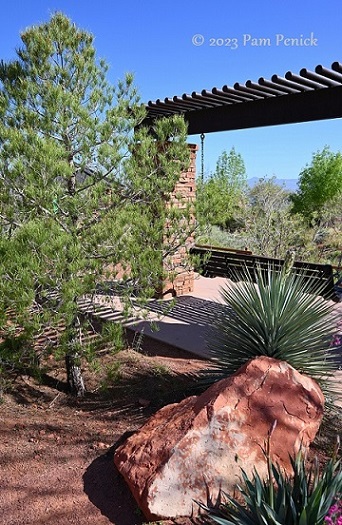
A soft-textured pine is at home here too.
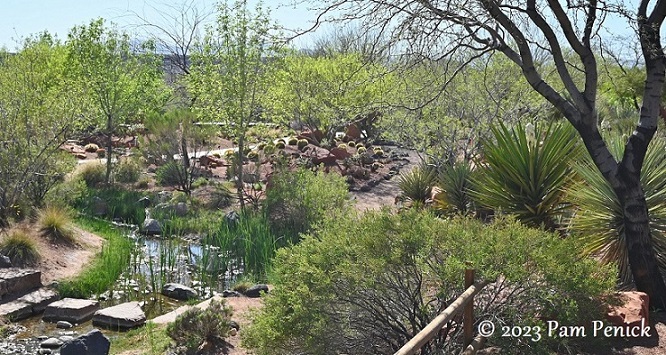
Atop a low hill you get a view across the garden, through a scrim of new-leafing trees.
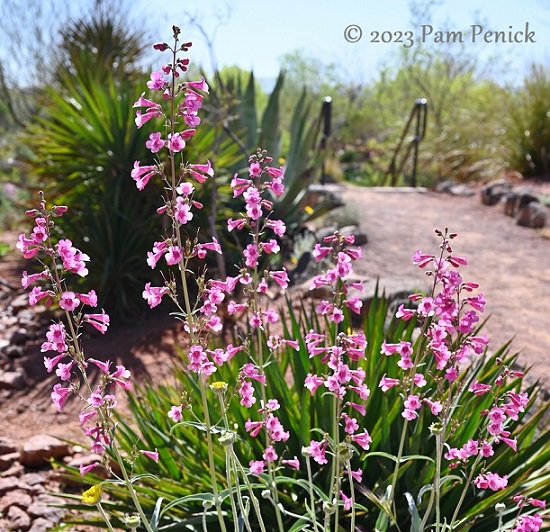
And back to my spring fave, that sparkling superb penstemon! I’ll have more from this garden in Part 2, so stay tuned.
Up next: Part 2 of my visit to Red Hills Desert Garden in St. George, Utah. For a look back at the hoodoo wonderland of Bryce Canyon National Park, click here.
__________________________
Digging Deeper
Come learn about gardening and design at Garden Spark! I organize in-person talks by inspiring designers, landscape architects, authors, and gardeners a few times a year in Austin. These are limited-attendance events that sell out quickly, so join the Garden Spark email list to be notified in advance; simply click this link and ask to be added. Season 8 kicks off in fall 2024. Stay tuned for more info!
All material © 2025 by Pam Penick for Digging. Unauthorized reproduction prohibited.


We’re really glad you visited, Pam! Let us know next time you’re in our region, we’d love to meet with you. For your readers who may follow your footsteps, be sure to also include the our river bottom garden, The Garden at Tonaquint Park.
Our garden staff, led by Ryan White and Casey Jones do an outstanding job managing our gardens and hosting horticultural education programs.
Happy trails!
Doug Bennett
Conservation Manager
Washington County Water Conservancy District
Great place! If I get up that way, I’ll be sure to visit.
The springtime garden was a treat.
Thanks, Doug. I do hope to return one day. Lovely garden! Thanks for the heads up about the Garden at Tonaquint Park too.
A nice display to underscore what can be accomplished when gardening in low water situations.
I’m reminded of one of the books that inspired me early on in my gardening, and it was a desert garden book: Yard Full of Sun by Scott Calhoun.